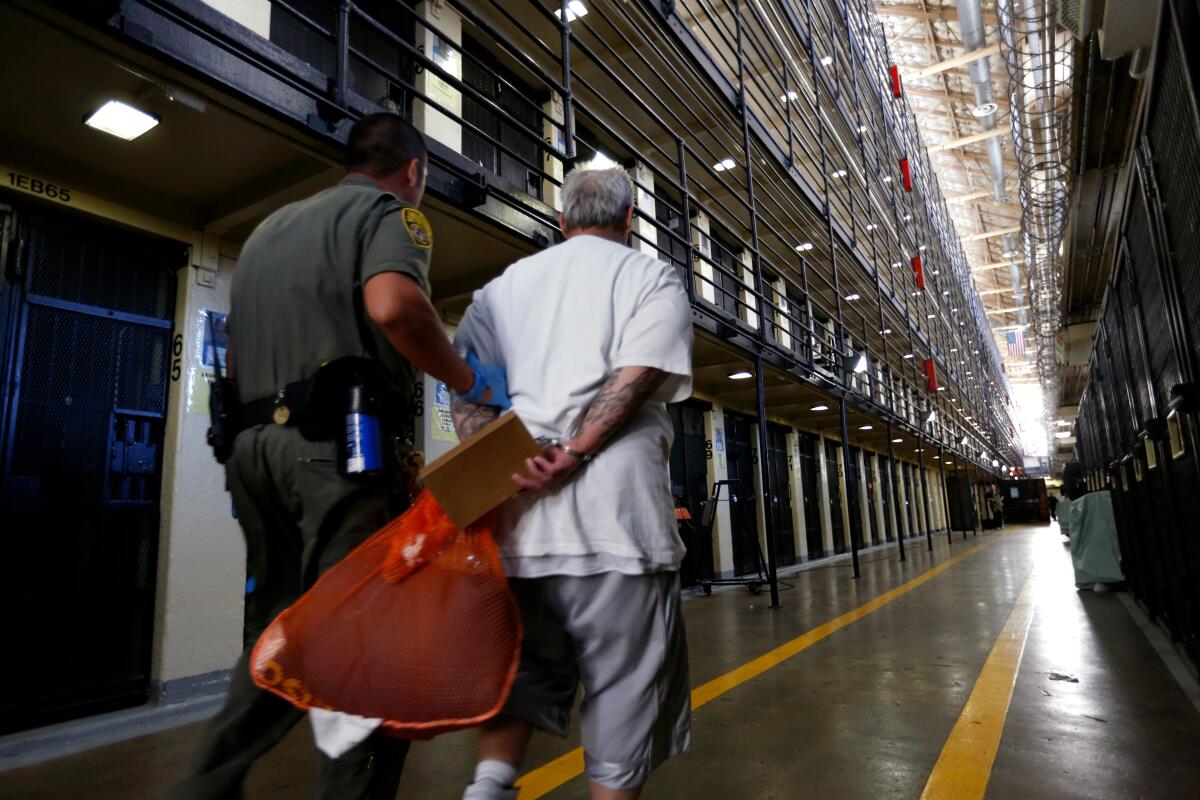Op-Ed: In prison, the work of journalism is challenging but essential

I am one of nearly 3,000 people in San Quentin State Prison who are paying for past mistakes. Most of us want to do the right thing so that we can earn parole or clemency and get back to our families and communities.
My “right thing” is journalism. Every day I walk the yard listening to the struggles and triumphs of fellow prisoners, gathering material to tell our story. My goal is to answer: So what?
More than 26 years behind walls have shown me that free people aren’t really paying attention to what’s happening in our society’s prisons and jails. Journalists, especially those on the inside, have a duty to show what is going on and why it matters. To answer the “so what.” Here are some reasons you should care about what my reporting shows.
California taxpayers are doling out roughly $100,000 a year to incarcerate each prisoner. A disproportionate number of the more than 40,000 people serving life sentences in California prisons are elderly, one reason our state has the highest prisoner healthcare spending in the nation.
The annual incarceration cost in the U.S. exceeds $80 billion.
About half of us here in San Quentin, me included, are serving a life sentence — and yet well over 90% of incarcerated people will eventually get out. So what’s happening behind these walls is rippling into the outside world. That means rehabilitation programs inside prison make a difference to everyone outside prison as well.
Right now, San Quentin is so overcrowded that COVID-19, for the third time, has forced this prison into quarantine and stymied rehabilitative services. That’s a loss for everyone, because these services work.
One effort in California aims to address the drug abuse crisis inside prisons. In 2020, the state began implementing the largest medication-assisted drug treatment program in the country. While official mortality data for 2020 is still pending, preliminary information shows a decrease in overdose deaths. Mortality data is just one early indicator: The largest payoff for society ought to come when incarcerated individuals who had a drug problem are released — not as active addicts back on the street, but as individuals who are in recovery and have tools to avoid using.
I’ve also reported on the availability of rehabilitative services that transformed the destructive nature of people, once out of touch with their communities, to people who’ve become accountable, empathetic and compassionate. Guiding Rage Into Power is a 52-week introspective program aimed at teaching its participants nonviolence, emotional intelligence, mindfulness and victim impact. Hundreds of prisoners completed the program. GRIP’s data shows that just one of nearly 1,000 has returned to prison.
These kind of programs matter to society as a whole, but they operate inside a black box. Only incarcerated journalists are in a position to observe the interventions up close and to speak with affected individuals. Unfortunately, we operate at an extreme disadvantage.
There is no privacy and no access to the internet. I use a typewriter and pen to send my stories to publications. Sometimes I feel the pressure that I may offend powerful interests. As an example, since contradicting the official report regarding the 2015 Legionnaires’ disease outbreak at San Quentin, I’ve been persona non grata to some prison officials.
No wonder professional journalism about prisons and jails from an incarcerated voice is rare.
Since 2009, I’ve been writing about what happens on my side of the wall. I’m now the senior editor for San Quentin News and a contributor to Solitary Watch, a nonprofit watchdog group.
When I report that a rehabilitation program is promising, there’s not likely to be much pushback. On the other hand, my piece “How Not to Fight a Prison Pandemic” continues a series of articles about the cruelty that prison officials inflict on the incarcerated population. Prison officials aren’t pleased — but the work is important.
Most of the time, it feels like I’m walking a tightrope. I’m always being yelled at and also praised. Still, I’m compelled to pick up my pen, because our walled-off voices need to be heard. How else can Americans learn what’s working and what’s broken inside the prison system? It’s up to incarcerated journalists to inform those conversations.
Juan Moreno Haines is senior editor of the San Quentin News and a contributing writer at Solitary Watch.
More to Read
A cure for the common opinion
Get thought-provoking perspectives with our weekly newsletter.
You may occasionally receive promotional content from the Los Angeles Times.










